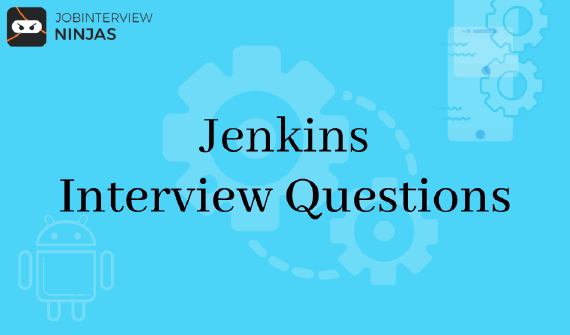
Top 40 Jenkins Interview Questions And Answers For Freshers/Experienced
If you are looking for a career in software development, then Jenkins is definitely worth exploring. This widely used …

Here we have brought you Advanced SQL Interview Questions to prepare for the upcoming job interview. This page is helpful to all the candidates who are looking for basic, intermediate, experienced 2,3,5,7, years Advanced SQL Interview Questions and Answers. Candidates can prepare from these 50+ Advanced SQL Interview Questions and Answers for their upcoming job interviews.
About Advanced SQL: It is a SQL language with advanced features like CTEs (Common Table Expressions), UDFs (User Defined Functions), Fulltext search extensions/ integration, performance tuning with new partitioning schemes, sparse columns, filtered indexes, etc.
1. Explain Failover clustering?
3. Explain Built-in/Administrator?
4. Differentiate between cross join and natural join?
6. Tell the ways to execute Dynamic SQL?
8. Explain Auto Increment in SQL?
9. Differentiate between Union and Union All command?
10. Explain transactions in SQL?
11. Explain SQL Sandbox in SQL Server?
12. Differentiate between clustered and non-clustered indexes?
13. Describe types of locks in the database?
14. Explain a Table in a Database?
17. Tell me the way to insert NULL values in a column while inserting the data?
19. Explain a Stored procedure?
21. Differentiate between DBMS and RDBMS?
22. Explain a field in a table?
23. How to sidestep duplicate records in a query?
24. Differentiate between an inner and outer join?
25. Explain the need for group functions in SQL?
26. Tell the way to send email from SQL database?
27. Tell about different types of SQL commands?
29. Create a remote connection in a database?
30. Differentiate between Having clause and Where clause?
31. Can a table include numerous PRIMARY KEYs?
33. What is the biggest value that can be reserved in a BYTE data field?
34. Differentiate between NULL value, Zero, and Blank space?
35. Name some ACID properties?
36. Explain types of subquery?
37. Explain joining and name its types?
39. Explain types of Privileges in SQL?
40. Mention the Syntax for STUFF function?
42. What is need to check in Database Testing?
43. Explain Normalization and its advantages?
44. Differentiate between DROP and TRUNCATE?
45. Differentiate between Nested Subquery and Correlated Subquery?
46. Discuss different Normalization forms?
47. Explain the Aggregate Functions available there in SQL?
48. State some properties of Relational databases?
1. Explain Failover clustering?
It is primarily used for data availability and it has two machines. One machine gives the essential services and the second machine helps in running the service when the main system fails.
The primary system is occasionally monitored to review its work. This monitoring may be conducted by an independent system or a failover computer which is known as a cluster controller. In an occurrence of failure of the main computer, this failover system carries control.
3. Explain Built-in/Administrator?
4. Differentiate between cross join and natural join?
It is a sort of database attack method where malevolent SQL statements are implanted into an entry field of a database so that once it is performed the database is unlocked for an attacker. This method is generally used for attacking Data-Driven Applications to reach sensitive data and accomplish administrative tasks on databases.
For Example: SELECT column_name(s) FROM table_name WHERE condition;
6. Tell the ways to execute Dynamic SQL?
These are the ways through which dynamic SQL can be performed:
Use these parameters to write a query.
Using EXEC.
Using sp_executesql.
8. Explain Auto Increment in SQL?
9. Differentiate between Union and Union All command?
10. Explain transactions in SQL?
11. Explain SQL Sandbox in SQL Server?
12. Differentiate between clustered and non-clustered indexes?
13. Describe types of locks in the database?
14. Explain a Table in a Database?
Relations or connections between entities that anyhow relate with each other. Relationships are defined as the link between the tables in a database.
There are various relationships, namely:
17. Tell me the way to insert NULL values in a column while inserting the data?
Views in SQL are sore of virtual tables. A view contains rows and columns similar to a real table in the database. We can make a view by specifying fields from one or more tables available in the database. A View can either have all the rows of a table or specific rows depending on a specific condition.
The CREATE VIEW statement of SQL is used for making Views.
Basic Syntax:
CREATE VIEW view_name AS
SELECT column1, column2…..
FROM table_name
WHERE condition;
view_name: Name for the View
table_name: Name of the table
condition: Condition to select rows
19. Explain a Stored procedure?
21. Differentiate between DBMS and RDBMS?
22. Explain a field in a table?
23. How to sidestep duplicate records in a query?
24. Differentiate between an inner and outer join?
25. Explain the need for group functions in SQL?
26. Tell the way to send email from SQL database?
SQL Server has an element for sending mails. Stored procedures can also be utilized for sending mail on request. With SQL Server 2005, the MAPI client is not required for sending mails.
Ensure that the SQL Server Mail account is configured perfectly and Database Mail is enabled.
Follow the below-given script to send an e-mail.
USE [YourDB]
EXEC msdb.dbo.sp_send_dbmail
abc@intellipaat.com;pqr@intellipaat.com’
@body = ‘ A warm wish for your future endeavor’,
@subject = ‘This mail was sent using Database Mail’ ;
27. Tell about different types of SQL commands?
29. Create a remote connection in a database?
30. Differentiate between Having clause and Where clause?
31. Can a table include numerous PRIMARY KEYs?
33. What is the biggest value that can be reserved in a BYTE data field?
34. Differentiate between NULL value, Zero, and Blank space?
35. Name some ACID properties?
36. Explain types of subquery?
Correlated subquery: These queries select the data from a table referenced in the external query. It is not viewed as a liberated query as it guides to another table and refers to the column in a table.
Non-Correlated subquery: This query is a liberated query where the output of the subquery is replaced in the main query.
37. Explain joining and name its types?
Join keyword is used to bring data from related two or more tables. It yields rows where there is a minimum of one match in both the tables contained in the join.
Types of joins are:
39. Explain types of Privileges in SQL?
System Privilege: System privileges deal with an object of a special type and determine the right to execute one or more actions on it in which Admin authorizes a user to execute administrative tasks, ALTER ANY INDEX, ALTER ANY CACHE GROUP creates/ALTER/DELETE TABLE, CREATE/ALTER/DELETE VIEW, etc.
Object Privilege: This permits executing actions on an object or object of other users (s) viz. table, view, indexes, etc. Some of the object privileges are EXECUTE, INSERT, UPDATE, DELETE, SELECT, FLUSH, LOAD, INDEX, REFERENCES, etc.
40. Mention the Syntax for STUFF function?
42. What is need to check in Database Testing?
43. Explain Normalization and its advantages?
44. Differentiate between DROP and TRUNCATE?
Subquery within another subquery is known as Nested Subquery. If the result of a subquery is based on column values of the parent query table then the query is known as Correlated Subquery.
SELECT admin(SELEC Firstname+’ ‘+Lastname FROM Employee WHERE
empid=emp. admin)AS EmpAdminId FROM Employee
This query gets details of an employee from the Employee table.
46. Discuss different Normalization forms?
First Normal Form (1NF): It deletes all duplicate columns from the table. Makes a table for related data and recognizes unique column values
Second Normal Form (2NF): Follows 1NF and forms and places data subsets in a particular table and describes the relationship between tables using the primary key
Third Normal Form (3NF): Follows 2NF and deletes those columns which are not related through the primary key
Fourth Normal Form (4NF): Follows 3NF and does not describe multi-valued dependencies. 4NF is also called BCNF
47. Explain the Aggregate Functions available there in SQL?
SQL Aggregate Functions computes values from numerous columns in a table and returns a single value.
There are seven aggregate functions we use in SQL:
48. State some properties of Relational databases?
A cursor is a database object which is used to influence data in a row-to-row manner.
The cursor follows phases as given below

If you are looking for a career in software development, then Jenkins is definitely worth exploring. This widely used …

In this post, we will cover a few Linux interview questions and their answers. So, let’s get started. In this …